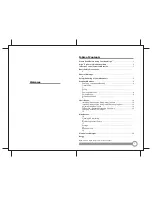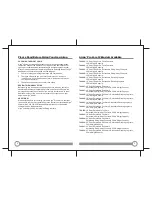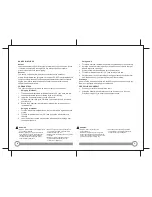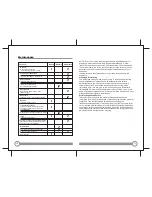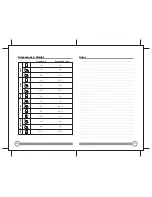
Going down
1. Turn the wheelchair backward and carefully step down to the next step.
2. Hold the wheelchair securely and pull the wheelchair to where the rear
wheels reach the curb edge.
3. Slowly roll the rear wheels down onto the lower level.
4. Tilt back to its balance point (~ 30°) and turn face forward.
5. Carefully lower the front casters by placing one foot on the tipping lever
until the wheelchair is completely cleared of the curb/step.
Stairways
Never use the wheelchair on stairs UNLESS you have someone to help you.
Ramps or elevators are strongly recommended.
PROPELLING YOURSELF
1. Position yourself comfortably in the chair.
2. Grasp the handrims and rotate them in the direction you wish to go.
Practice slowly until you develop a consistent stroke.
RAMPS & INCLINES
Ascent
Lean the upper part of your body slightly forward as you propel up an incline.
If it becomes necessary to stop, avoid any abrupt or sudden forward
movement as this could cause tipping.
Descent
This should only be performed with the assistance of an attendant.
Always face forward when going down a ramp, but DO NOT lean forward as this
could cause the wheelchair to tip. Leaning backward can increase the stability
slightly. It is critical to keep the wheelchair under control at all times and to
handle the wheelchair slowly.
CURBS & STEPS
This should only be performed with the assistance of an attendant.
Going up (method 1)
1. Tilt the wheelchair backward to its balance point (~ 30°) and move forward
until the front casters pass over the top of the curb or the step.
2. Lower the front casters slowly on top of the curb.
3. Lift the wheelchair and push it forward until the rear wheels roll up and
over the curb.
4. Ensure the wheelchair is completely cleared of the curb and cannot
roll backwards.
Going up (method 2)
1. Turn the wheelchair backward until the rear wheels are against the curb
or step.
2. Tilt back to its balance point (~ 30°) and pull up the wheelchair over
the curb.
3. Lower down front casters only once the wheelchair is far enough from
the edge of the curb.
WARNING:
•
DO NOT lean over the top of the
back upholstery.
•
DO NOT attempt to step over a high curb
without two attendants. ALWAYS check the
hand grips to make sure that they are secure
and are not rotating or slipping off.
•
Wheelchairs are especially prohibited
on escalators. It is extremely dangerous
and should never be attempted.
!
WARNING:
•
DO NOT attempt inclines or declines without
an anti-tipper installed.
•
DO NOT attempt any incline or decline of
more than nine degrees. During descent,
the lowest part of the footrest should be
no closer to the ground than 2½ inches
to permit proper clearance.
•
DO NOT engage the wheel locks suddenly
on an incline or decline. It is better to roll
backwards than to tip over.
•
DO NOT allow the wheelchair to drop off the
curb edge.
•
DO NOT attempt to lift the wheelchair
by any detachable armrest, leg rest
or other removable parts.
!
8
9


